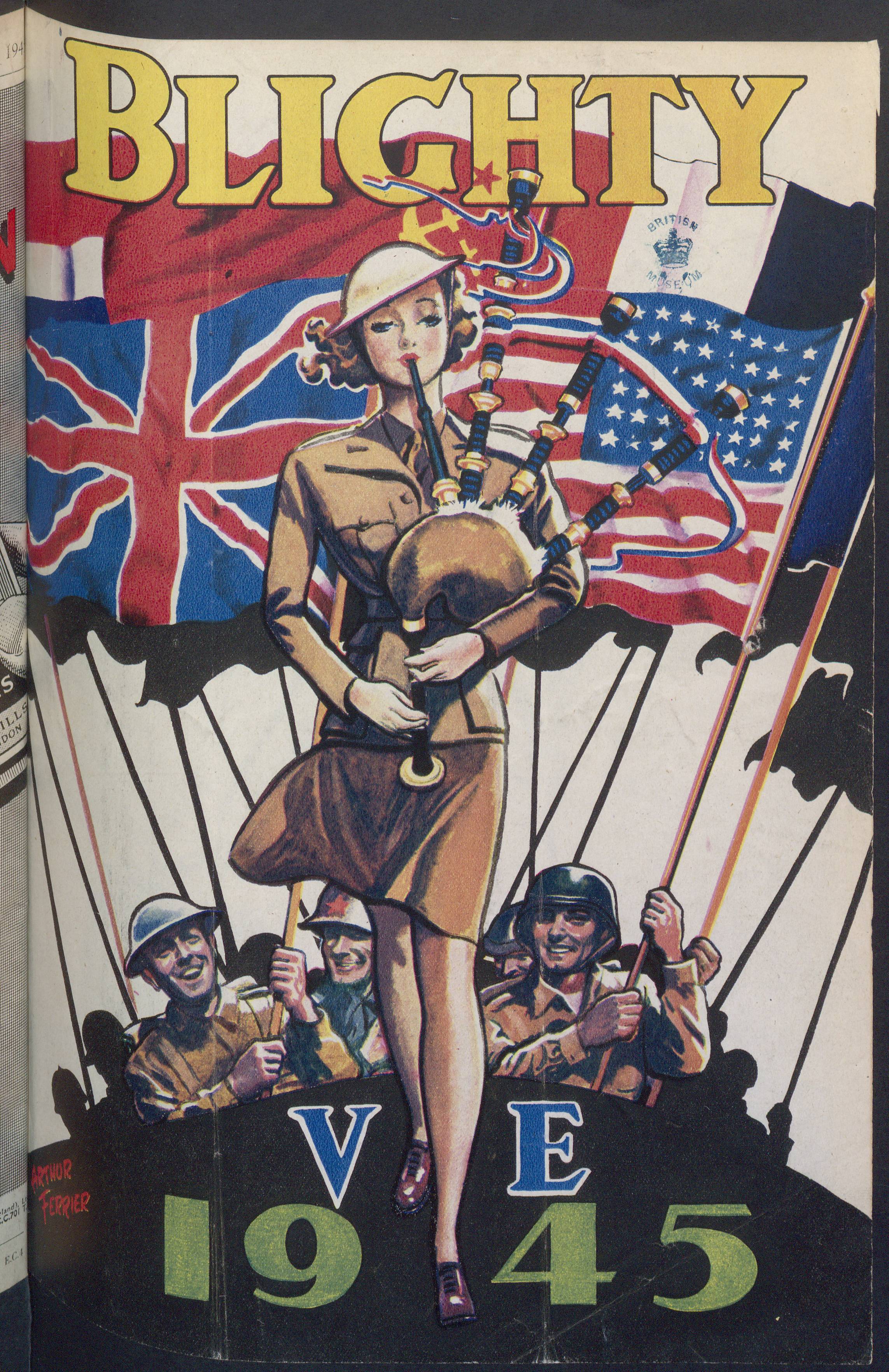Nature and Scope
OVERVIEW
Journalism played a vital role in keeping those serving in the war informed and connected, wherever in the world they happened to be stationed. Service newspapers acted as a vital mouthpiece, being variously responsible for:
- keeping the units apprised of the general progress of the war
- providing news local to where the units were stationed
- reporting on life back at home
- encouraging discussion and intellectual improvement
- offering amusing anecdotes, competitions, cartoons and entertainment
The newspapers would be shared between units, often changing hands several times, eagerly anticipated for the morale boost and distraction from the discomforts and uncertainty of wartime military service. The nature of the content varies considerably from title to title, depending on such factors as availability of printing resources and whether the editors were appointed from among the men themselves (often resulting in more light-hearted editorial) or officially commissioned by senior staff (which usually meant a certain element of censorship).
To today’s scholars these newspapers, so rich in social and cultural history, offer a unique perspective on the local and global experience of the war and will enable the research of key historical events through the medium of contemporary publications.
KEY TOPICS
- News coverage of key events, victories and battles
- The soldier’s experience
- The role and portrayal of women
- Activity on the home front and the civilian experience
- Identity and belonging
- Morale and propaganda
- Light entertainment
- Local news and customs
- Education and welfare
- Empire
SCOPE
The collection consists of newspapers published during the war and its immediate aftermath (1939-1948). Titles from all the key theatres are featured, including some non-English material in German, Czech, Hindi, Russian, French, Italian, Polish, Hebrew, Afrikaans, Swahili, and African dialects.
LANGUAGE AND TERMINOLOGY
All editorial decisions relating to this project have been made with great care, consideration and with the utmost sensitivity.
Every care and attention has been paid to preserve the historic authenticity of these documents. Any terminology that may be deemed discriminatory or offensive by present-day principles may have been preserved for the historic accuracy and relevance to that particular document.
HIGHLIGHTS
In the documents:
Module One
- 13 editions of Union Jack, covering news from various fronts between 1943 and 1948
- The weekly newspaper Springbok, produced for the South African forces serving in the Middle East
- The Maple Leaf, published daily for Canadian forces in Britain
- Stars and Stripes London edition, published daily for the US armed forces in the European theatre
- Fauji Akhbar, a highly visual publication for Indian troops
- Victory, another highly visual magazine for British soldiers serving in India
- Eighth Army News, a British weekly for forces in Italy
Module Two
- Highly visual weekly magazine Parade, published for British forces in the Middle East.
- The all-services newspaper of South East Asia Command, SEAC.
- Ceylon Review, a weekly publication for British forces in Ceylon (Sri Lanka).
- Yank, a popular magazine for the US armed forces.
- The Land Girl, published in Britain for the women’s land army on the home front.
- American and Australian editions of Guinea Gold.
- Blighty, a weekly paper for British forces.
Secondary features providing further tools for teaching and research:
- Read profiles of some of the key newspaper titles in the collection to acquire background context to the documents themselves
- View the image galleries to see some of the visual highlights from the newspapers
- Use the interactive map to explore the documents geographically
- Read contextual essays from academic experts


